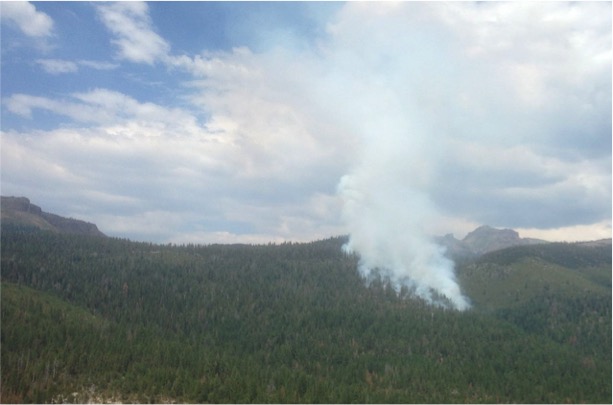
Photographed in its early days, the McCormick lightning fire spread slowly across forested slopes above the Clark Fork of the Stanislaus River. Stanislaus Forest fire crews managed the fire, allowing the wildfire to consume years of accumulated fallen branches, pine needles, dead logs, and other fuels, and steering it away from Clark Fork Road and recreation facilities. Over weeks of hot temperatures and periodic gusts from thunderstorms, the “mostly beneficial” McCormick Fire gradually grew to roughly 4,000 acres in size – creating a diversity of fire effects.
In Yosemite Park fire crews also chose to manage two fires — the 6,800-acre South Fork Fire east of Wawona and the 6,200-acre Empire Fire south of Bridalveil Campground. Firefighters cut off flames that posed potential threat to Wawona, but the east sides of both fires were allowed to burn for weeks in rugged wilderness terrain. Moderate and low intensity fires in the forest can provide many ecological benefits. In contrast, higher severity fires such as the recent Railroad Fire (near Yosemite’s southern boundary) can be much more damaging to resources and homes.

